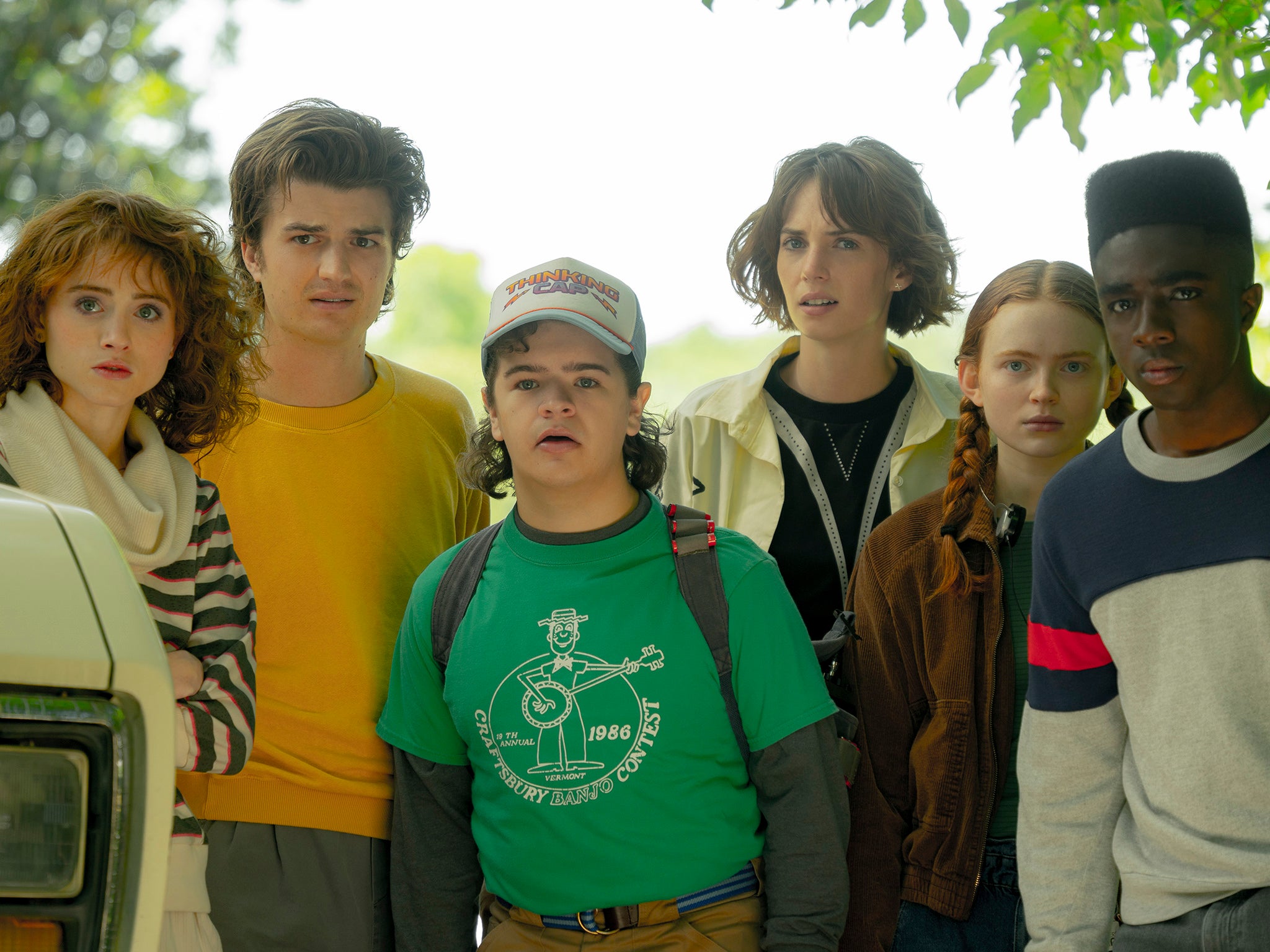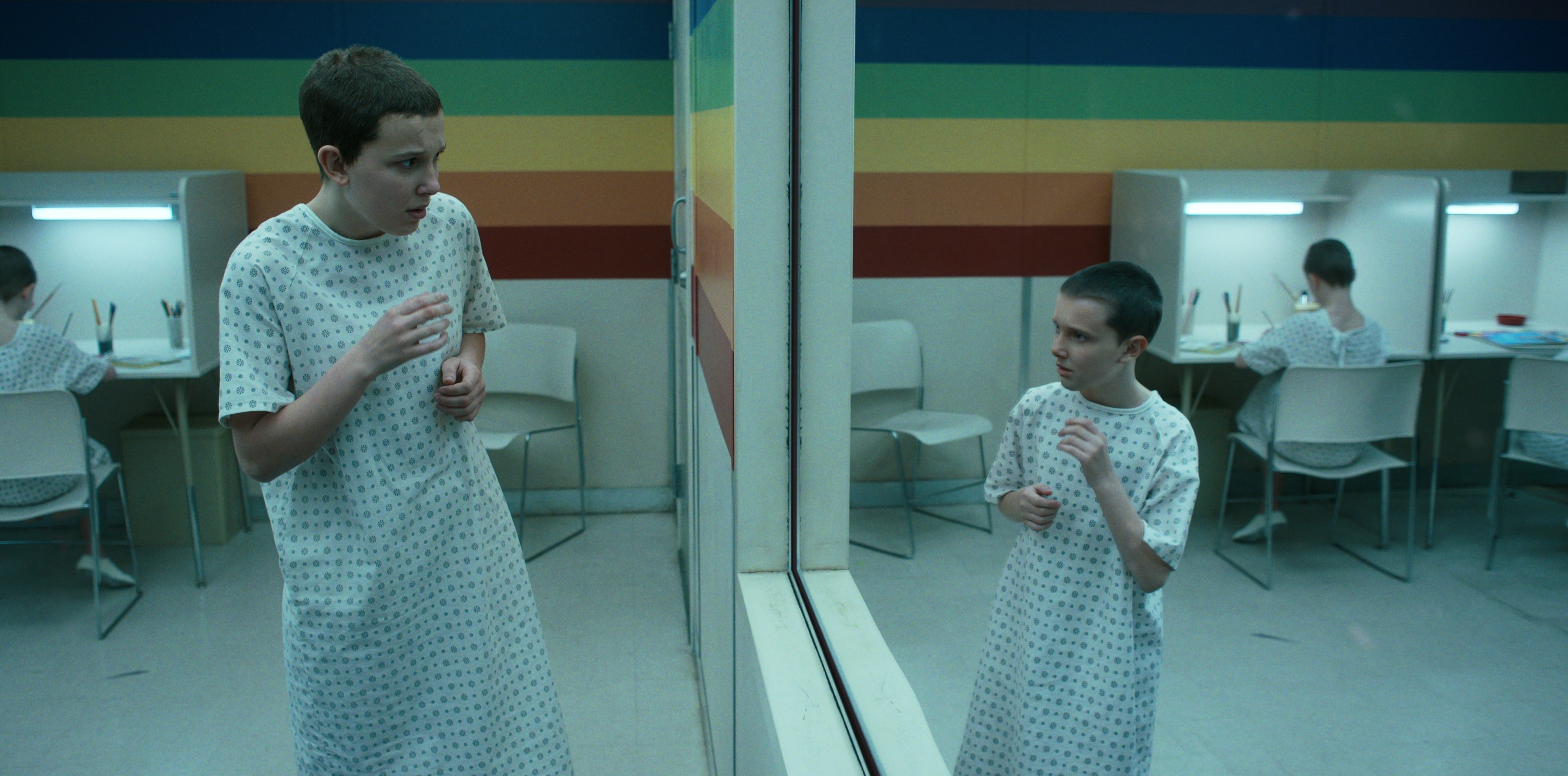In defence of Stranger Things and the epic episode runtime
Stop complaining about television shows being too long, says Amanda Whiting, who believes an extended episode gives the small screen a touch of Hollywood magic


Your support helps us to tell the story
From reproductive rights to climate change to Big Tech, The Independent is on the ground when the story is developing. Whether it's investigating the financials of Elon Musk's pro-Trump PAC or producing our latest documentary, 'The A Word', which shines a light on the American women fighting for reproductive rights, we know how important it is to parse out the facts from the messaging.
At such a critical moment in US history, we need reporters on the ground. Your donation allows us to keep sending journalists to speak to both sides of the story.
The Independent is trusted by Americans across the entire political spectrum. And unlike many other quality news outlets, we choose not to lock Americans out of our reporting and analysis with paywalls. We believe quality journalism should be available to everyone, paid for by those who can afford it.
Your support makes all the difference.Runtime is relative. Turkish soap operas routinely push out two-hour episodes multiple times a week. The Indian police procedural CID once aired a single shot that lasted 111 minutes – an achievement memorialised in the Guinness Book of World Records. The series finale of MASH, perhaps the most beloved television programme of all time, clocked in at 121 minutes long. So the fact that the average length of a Stranger Things season four episode is 78 minutes is hardly unprecedented. But it is a gift.
Since the new season dropped at the end of last month, the grouchier corners of the internet have erupted over “ridiculous” runtimes. For comparison, the sci-fi show’s last season averaged episode runtimes of just under an hour, which means a single recent episode costs viewers about 20 extra minutes of their precious lives.
Does every series warrant episodes the length of a short feature film? Obviously not. That Stranger Things can command so much of its audience’s attention is a reflection of how central TV has become to the summer calendar. Nowadays, you can see a superhero movie any time of year. In fact, you can see one almost every time of year. But Stranger Things hasn’t dropped new episodes since 2019! The bodacious runtimes, like the series’ wild $30m (£24m) an episode budget, just solidify its status as a bona fide summer blockbuster.
From the beginning, Stranger Things vibrated on a wavelength once reserved for popcorn movies. There’s the anticipatory build-up fuelled by the slow leak of teasers and trailers. The seasons have premiered on dates you’d expect big, fun, spooky spectaculars to hit theatres, from Halloween weekend to Independence Day. The latest drop was pegged to Memorial Day in the US, the same day the Top Gun sequel made its way into the world. Which is to say, Stranger Things has always been an occasion. Considering episode one lasts 78 minutes, finding the perfect mood lighting and the right array of snacks is also its own appropriately giddy event.
It’s worth noting that the more traditional structures – the 30-minute sitcom, the 60-minute drama – don’t represent some platonic ideal of episodic television. The regularised blocks made it easy for networks to build their line-ups. But even before streaming upset the equation, the best TV often fought its confines. Were there any words in terrestrial broadcasting more thrilling than “extra special double episode”? This rule-breaking concept gave us “Fun Run” – a classic from the US Office canon. It gave us Ross and Emily’s London wedding in Friends. Could Meredith have removed the bomb from that man’s chest cavity in a single hour on Grey’s Anatomy? Probably, but I’m not mad it took twice as long.
Tellingly, the double episode is the final form many of the most enduringly popular shows have ended up taking. The finales of MASH, Friends and the US Office, yes. But also ER, Seinfeld, Battlestar Galactica (a triple episode, technically), the two-and-a-half hour finish of Lost. It’s not simply that some stories take longer to tell, but that telling them longer reflects what they mean to people.

So what gets cuts in a leaner, meaner version of Stranger Things? By season four, the show’s world has ballooned with lovable characters, and they all need something to do. It was always going to veer in the direction of the unwieldy, but there’s no way Joyce’s loopy, heroic bid to save Hopper’s life – arguably the season’s wackiest storyline – ends up on the cutting room floor. The Duffer Brothers aren’t going to just leave Will and Mike chilling in a Lenora Hills split-level for seven episodes. What you lose when you trim a plot-driven show like Stranger Things are the moments that make it so charming: the Easter eggs and sunny montages, the lingering crawls through the Upside Down and the longshots of kids riding their bikes after curfew like something out of ET.
But those images, cribbed from cinematic references ranging from Sixteen Candles to A Nightmare on Elm Street, are essential to Stranger Things’ larger-than-telly appeal. It’s always strived to be a TV series in the key of the cheesiest “they don’t make ’em like they used to” Hollywood romps. And now the episodes have scale to match. The final episode of season four, which drops just in time for the 4th of July fireworks, is reportedly two-and-a-half hours long – the same as a Marvel movie or an episode of Lost. You won’t hear me complaining.



Join our commenting forum
Join thought-provoking conversations, follow other Independent readers and see their replies
Comments